 |
|||||||||||||||||||||
|
On the Level-1 Unico, I was immediately struck by an enormous soundstage and incredible visceral impact that threw me back into my chair not unlike that old Maxell ad. The whole back wall just disappeared and was replaced by a thoroughly immediate and engaging, room-filling dynamic presence. The Unico and my Kestrel 2s made a great synergistic pairing, both excelling in the recreation of space. It was a presentation difficult to get up and walk away from. There was also a beguiling warmth and clarity plus a touch of midrange liquidity that suggested the influence of glowing glass. Added sibilance and chestiness on vocals were noticeable by their absence. This was my first experience with a hybrid amplifier. There really does seem to be something special about mixing two technologies. The Unico had the iron fist of high-current transistors and the velvet glove of tubes, allying the sweetness, texture and delicacy of valves with solid state muscle and control. In many respects, one enjoys the benefits of either topology without their potential limitations. The Level-1 Unico also displayed articulated imaging, excellent resolution and transparency across the spectrum, casting a forward, immediate sonic picture with terrific dynamics and solid bass wallop of exceptional pitch definition. |
|||||||||||||||||||||
| If Level-1 was smokin', Level-2 was a monster, sharing the deft combination of sand and glass but adding a significant dose of bottom-end crunch and top range extension. The upscale Unico also revealed more inner detail, ambience and low-level transients, with the soundstage widening and becoming more layered. In large-scale orchestral works such as Lenny's Mahler 2nd Symphony [DG 423 395-2], I was more aware of rows and groups of instruments, splayed across stage left to right and front to back. I was presented with an enhanced midrange clarity and spaciousness that added a more live feel to music playback. Surprisingly, the Level-2 Unico actually sounded more powerful than its junior companion, as though the power rating had increased dramatically. | |||||||||||||||||||||
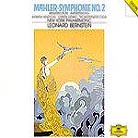 |
|||||||||||||||||||||
Furthermore, music emerged from a slightly blacker sonic background, not quite as dark as my Bryston but quieter just the same. Subtle details like the stroke of a brush on a snare drum or the reedy sound of a clarinet were more pronounced. As for the bass, oh my, it was as if another octave were gained. Kick drums had terrific impact and extension. The finale of Mahler's 2nd with combined orchestra, choir, soloists and organ was simply overwhelming, not unlike what I experienced during a recent performance of this monumental work in Toronto's George Weston Recital Hall [right]. |
 |
||||||||||||||||||||
|
I will honestly confess that I've never yet cranked an amp to levels as uninhibited as the Level-2 Unico without being troubled by distortion. The amp was so clean and controlled that listener fatigue never became an issue. This was quite an incredible experience! The Level-2 had no difficulty with any musical genre or volume I chose to throw at it. It became child's play to identify the slightest system change effects such as a cable or support footer substitution. Not only was this a great analytical tool, it was a thoroughly involving, musical piece of kit with terrific immediacy and presence. Frankly, given the mere $400 cost difference, I was completely taken aback by the superiority of the Level-2 over the Level-1. I can only guess at the differences compared to the stocker. If I were contemplating upgrading an existing model or purchasing a modded unit, I'd spring for the Level-2. At only $2,295, Walter and Chris believe the Level-2 Unico bests the likes of the BAT or Mark Levinson integrated amps. I suspect a great deal of the noted sonic differences were due to the substitution of the stock opamps in the amplifier driver stage since greater resolution and high-frequency extension are two of the claimed characteristics of Burr-Brown's OPA-627. |
|||||||||||||||||||||
| The bass on Stevie Ray Vaughan's title track from Couldn't Stand the Weather [Epic SACD 65871] was exceptionally full and well-defined via the Level-1. But its more expensive sibling added grunt, pitch definition and transistor tautness and control. No flab here. For kicks, I dropped in Bill Laswell's subterranean electric bass feast, Radioaxiom: A Dub Transmission [Palm CD 207]), to see just how low the Level-2 Unico could go. It went down so far, my usually inert windows rattled like the bars of the Metro Toronto Zoo's primate cage during mating season. Frankly, I was surprised that those little Peerless woofers on my Kestrels didn't launch themselves across my room. The last time I experienced a body slam of similar magnitude was some years back in my 'army guy' days while watching a nearby battery of 105mm howitzers chew up selected portions of Ontario's countryside. |
|||||||||||||||||||||
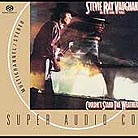 |
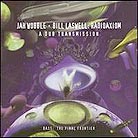 |
||||||||||||||||||||
Not to suggest that the Level-2 Unico was all brawn, no brains; it was easy to focus on individual lines and orchestral sections. There was also an exceptional degree of air and space around instruments to fool the ear/brain into sensing real performers present. |
|||||||||||||||||||||
|
In Walton's Cello Concerto [Naxos CD 8.554325], the Level-1 Unico brought out the power and growl of the cello's lower register and deftly mixed it with the rich, expressive texture produced by rosin, bow and strings. It appeared to put the cello right in front of me. With the Level-2, I not only heard more detail and extension but somehow, cello and orchestra sounded more three-dimensional and alive. I could also perceive the massed strings and woodwinds reflecting off the walls. Thomas Ehnes' reading of Bach's Sonatas and Partitas for Solo Violin [Analekta CD FL 2 3147-8] was electrifying on the junior Unico, his warm violin tone wonderfully present, the sense of fingers and bow flying across the strings clearly audible. As with the previous recording, the Level-2 extracted more micro data from the recording, thus enhancing the feeling of a live performance. The surrounding acoustic was better realized and Ehnes' violin emerged from a blacker background, his tone slightly more rounded and full. |
|||||||||||||||||||||
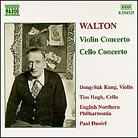 |
 |
||||||||||||||||||||
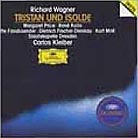 |
 |
||||||||||||||||||||
|
|
|||||||||||||||||||||
|
When comparing the Unicos to my reference Bryston B60, it was striking how these designs tended to sound like their respective physical appearance. The Unicos cast a big, room-filling soundscape with awesome slam, palpable presence and greater extension at both ends of the spectrum. The wee Bryston presented a smaller, more reserved performance. The soundstage was set farther back from the plane of the Kestrel 2s. However, its music emerged from a blacker background. I detected a fair degree of hum and low-level noise on both Unicos during idling or quiet passages. The little Bryston, while not endowed with the sheer dynamic oomph and resolving power of either Unison Research unit, was as quiet as a tomb. As my real profession is in the cemetery business, I am an expert on tombs. Trust me, they are very quiet. |
|||||||||||||||||||||
 |
|||||||||||||||||||||
|
|
|||||||||||||||||||||
| For a measly $400 surcharge, the Level-2 is so good -- and significantly superior to the Level-1 mod -- that serious potential buyers and upgraders should bypass the junior. If you haven't the shekels, beg, borrow or steal the green. Ultimately, the Level-2 Unico should be compared to $4000-$5000 integrated amplifiers. I cannot conceive of anyone not completely satisfied with it. It's definitely one of the best-sounding amplifiers in its price range I've heard this past year. If I were a professional racecar driver, I'd sure want Walter and Chris on my team. It'd convey the peace of mind knowing that they'd wring every last drop of possible performance from my car. Incidentally, the Italian firm has now changed the previous RF-based Unico remote [right] to an IR unit that controls both the integrated amplifier and matching Unico CD player. Underwood HiFi hasn't yet committed to a parallel modification on the disc spinner but does stock it and the amp while units to be modified are shipped from Liederman's inventory to PartsConneXion's Canadian facility. Parties interested in the reviewed versions should contact Underwood HiFi's website below. |
|||||||||||||||||||||
 |
|||||||||||||||||||||
 |
|||||||||||||||||||||
| Manufacturer's Italian website US distributor's website |
|||||||||||||||||||||
 |
|||||||||||||||||||||